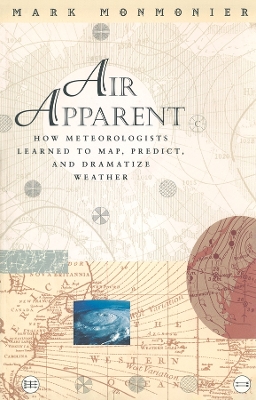Every night across the country, viewers tune in to their evening news to glimpse the next day's weather. They are treated to graphic images of invading air masses, colliding fronts, and growing tropical storms. This book is the story of this tool, the weather map, which in its many forms has made the atmosphere visible, understandable, and at least moderately predictable. No other maps are so spontaneously timely, so widely and frequently consulted, and so central to the daily activities of so many. The singular history of the weather map developed around the twin poles of weather's many facets and the public's varied needs. Mark Monmonier traces the contentious debates among scientists eager to unravel the enigma of storms and global change, explains the strategies for mapping the upper atmosphere and forecasting disaster, and exposes the efforts to detect and control air pollution. He introduces Karl Theodor, a Bavarian politician who devised one of the first weather-tracking networks in the late-18th century, and Heinrich Wilhelm Brandes, who drew the first maps of European weather in 1819 - for the year of 1783.
Monmonier also explores the interaction between technology - from the telegraph to the Internet - and weather forecasting.
- ISBN10 0226534235
- ISBN13 9780226534237
- Publish Date 15 November 2000 (first published 15 April 1999)
- Publish Status Active
- Publish Country US
- Imprint University of Chicago Press
- Edition New edition
- Format Paperback
- Pages 324
- Language English
- URL http://wiley.com/remtitle.cgi?isbn=9780226534237
